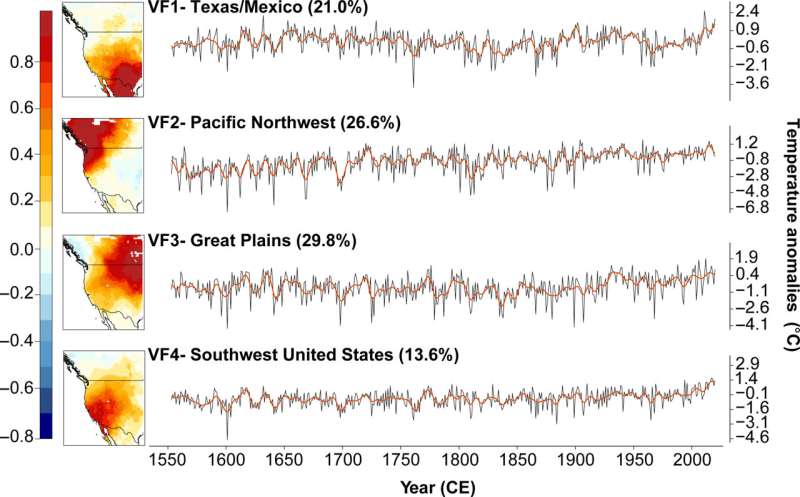January 25, 2024 report
This article has been reviewed according to Science X's editorial process and policies. Editors have highlighted the following attributes while ensuring the content's credibility:
fact-checked
peer-reviewed publication
trusted source
proofread
Study shows hot droughts in the western US have become more common over the past five centuries

A team of geographers, climatologists and tree ring specialists affiliated with multiple institutions in the U.S. has found the number and degree of hot droughts in the western U.S. is unprecedented in the modern era. In their project, reported in the journal Science Advances, the group studied tree ring and historical drought data over the years 1553 to 2020.
Anecdotal evidence suggests that the weather in the western parts of the United States is different than it used to be—the increasing number of fires, their strength, the high temperatures and the long droughts all suggest that climate change has created unprecedented conditions in a major part of the country.
In this new effort, the researchers sought more measurable evidence of such changes. To that end, they conducted a study of tree rings from samples collected from around the western United States over many years. They also obtained and analyzed historical records describing heat and drought conditions in the West over the past five centuries.
In looking at the tree rings, the researchers focused on ring density rather than size, because it provides a reasonably accurate measure of temperatures over a growing season. They found that many parts of the West have been slowly growing warmer since the 1500s—particularly over the past two decades. And in their analysis of drought records, the team found trends showing more widespread droughts and droughts duration growing longer.
Finally, by comparing data from the two parts of their study, they found evidence of a growing number of hot droughts—where temperatures are above normal during droughts, particularly in more recent times. Notably, in modern times, some droughts in some parts of the West have become so extreme that they have been nicknamed megadroughts.
The research team concludes that man-made climate change is driving changes in weather patterns in major parts of the western U.S., and all signs suggest that temperatures are likely to increase as global warming increases, along with more and longer droughts, hot droughts and megadroughts.
More information: Karen E. King et al, Increasing prevalence of hot drought across western North America since the 16th century, Science Advances (2024). DOI: 10.1126/sciadv.adj4289
Journal information: Science Advances
© 2024 Science X Network




















